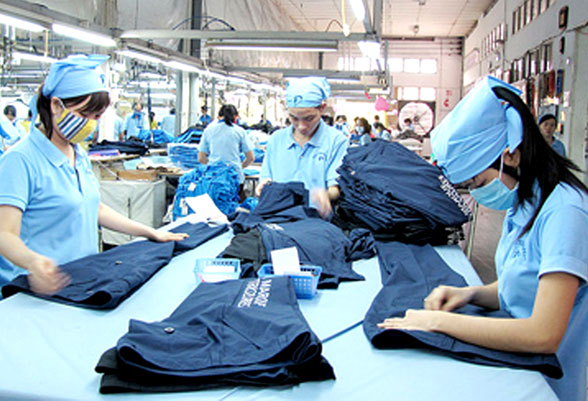Decree 141/2017/ND-CP, which came into effect on January 25, 2018, has officially stipulated the regional minimum wage for 2018. The regional minimum wage in all areas has increased by approximately 6.5% compared to 2017.
The increase in regional minimum wage is a positive sign for employees. However, for employers, the consistent increase in regional minimum wage over the years poses quite a few difficulties, especially for labor-intensive businesses such as textile companies.
According to statistics from 2009 to 2018, the regional minimum wage has consistently increased every year. For example, in Region I, the regional minimum wage from 2014 to 2018 increased as follows: 2,700,000 VND (2014) → 3,100,000 VND (2015) → 3,500,000 VND (2016) → 3,750,000 VND (2017) → 3,980,000 VND (2018). Many opinions suggest that maintaining steady wage increases over the years does not align with the real situation and "erodes" businesses. Therefore, most companies do not want to adjust and increase the regional minimum wage.
So, what challenges do such increases in regional minimum wage pose for businesses?

Firstly, the burden of labor costs
When the regional minimum wage increases, it means that businesses have to increase spending on the following items: Social insurance for employees, union fees, and wages for employees if the company's salary scale is lower than the current regional minimum wage.
Meanwhile, the social insurance contribution rate, together with union fees, has already reached 34% (32% for social insurance and 2% for union fees), now has to increase by an additional 2% in line with the increase in regional minimum wage. With this situation, businesses bear excessively high costs while labor productivity does not increase proportionately to the rise in the regional minimum wage.
Secondly, increased competitive pressure with foreign businesses
The rise in regional minimum wage has led to an increase in labor costs. This means that the production costs of businesses rise. Consequently, to compete with economically strong companies, Vietnamese businesses have to choose between increasing labor productivity or raising product prices. Increasing labor productivity is not a one-day task due to significant technological demands.
While bearing additional costs due to the rise in regional minimum wage, technological changes indeed pose a major pressure on businesses. Reducing prices also does not seem effective at this time. Reducing prices would mean a reduction in the competitive ability of Vietnamese businesses as they are currently competing on price with foreign firms.
As mentioned, the 2018 regional minimum wage can be considered a beneficial sign for employees. However, such steady increases over the years need to be reconsidered.
- Doan Trinh -
 Article table of contents
Article table of contents





.Medium.png)
.Medium.png)
.Medium.png)
.Medium.png)
